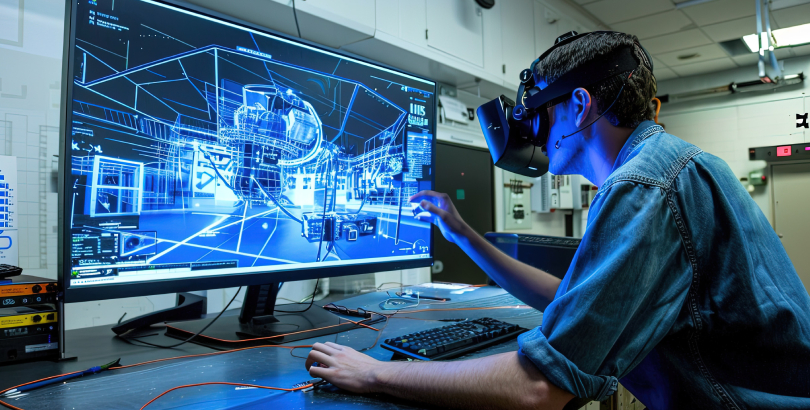Audiovisual technology impacted and transformed productivity in
A fundamental manner. Transforming various processes, fostering collaboration and increasing output and efficiency, knowledge sharing, innovation.
Video conferencing solutions: Through audiovisual technology, the following advantages shaped and transformed productivity in firms and business organisations: Effective display for processes: Before AV systems, there might not have been a less effective display for processes in facilities, but with the advent and effective use of AV systems, there was an effective display for processes. Enabling effective display, workers, managers, and the workforce utilised solutions that aided, guided, and directed their work, increasing productivity.
Audio and video conferencing: Improved training for professionals: Utilising audiovisual technology enabled workforces, professionals, interns, and trainees to receive an improvement in the quality of training, whether through better technology, delivery and quality of course content, increased participation rates, enrolment rates, as well as improved retention of knowledge. Audiovisual technology, such as the poly video conferencing system, directly impacts productivity by improving the quality of professional training and expertise. Solid and efficient audiovisual technology solutions and architecture enable improved training for professionals. Replacing models for processes and workflows: As audiovisual systems are a technology, the technologies replaced models for processes and workflows, enabling vast efficiency improvements and increasing productivity. Replacing vast paper and analogue processes led to improvements.
Indoor LED: Increasing capabilities in workspaces and work environments: Audiovisual technologies vastly increased capabilities in workspaces and work environments. This aided productivity as technologies like digital displays, microphones, and speakers integrated into the workspace and working environments, growing capabilities and functionalities.
Collaboration: By actively utilising audiovisual technology, cooperation and teamwork within working environments can be increased significantly. This aids productivity. Audiovisual systems generally foster higher levels of collaboration between individuals and professionals in working environments, increasing production and efficiency, tightly coupling organisations, and improving motivation and work ethic.
Increasing sharing of knowledge and access to information: Via
enabling massive and open increases of knowledge information within workspaces working environments; AV technology enabled increases in productivity and efficiency, and professionals and teams could access and share knowledge information, leading to vast increases in productivity.
Improvements in decision making: Audiovisual technology enabled
improvements in the decisions required by workers, through the provision of quality knowledge and practical capabilities to reach individuals without distortion, AV technology enables improvements in decision-making for professionals and individuals to make better decisions for production, collaboration, workflows, and optimisation.
Improvements in décor: Audiovisual technology enhances living
spaces by enabling visual and audio solutions for practical
improvements in décor. Via enhancing living spaces and working spaces,
audiovisual technology enhances décor and general livability of spaces. Applied to working environments, AV technology such as the conferencing unit enables improvements in décor, themes, and motifs. Replacing job roles, workflows, and processes: Audiovisual technology and its near-future integration with artificial intelligence would replace and enhance various jobs and workflows, enabling an adequate replacement and improvement in the respective workflows and processes.
Conclusion:
Audiovisual technology enabled various replacements in functions, processes, and information sharing. It revolutionised and provided new methods of interacting, giving knowledge, and increasing collaboration and communication between individuals, vastly improving productivity in working environments, businesses and corporations. Thus leading to the current architecture within work and professional environments where Audiovisual technology is currently a staple of the modern working environment.





